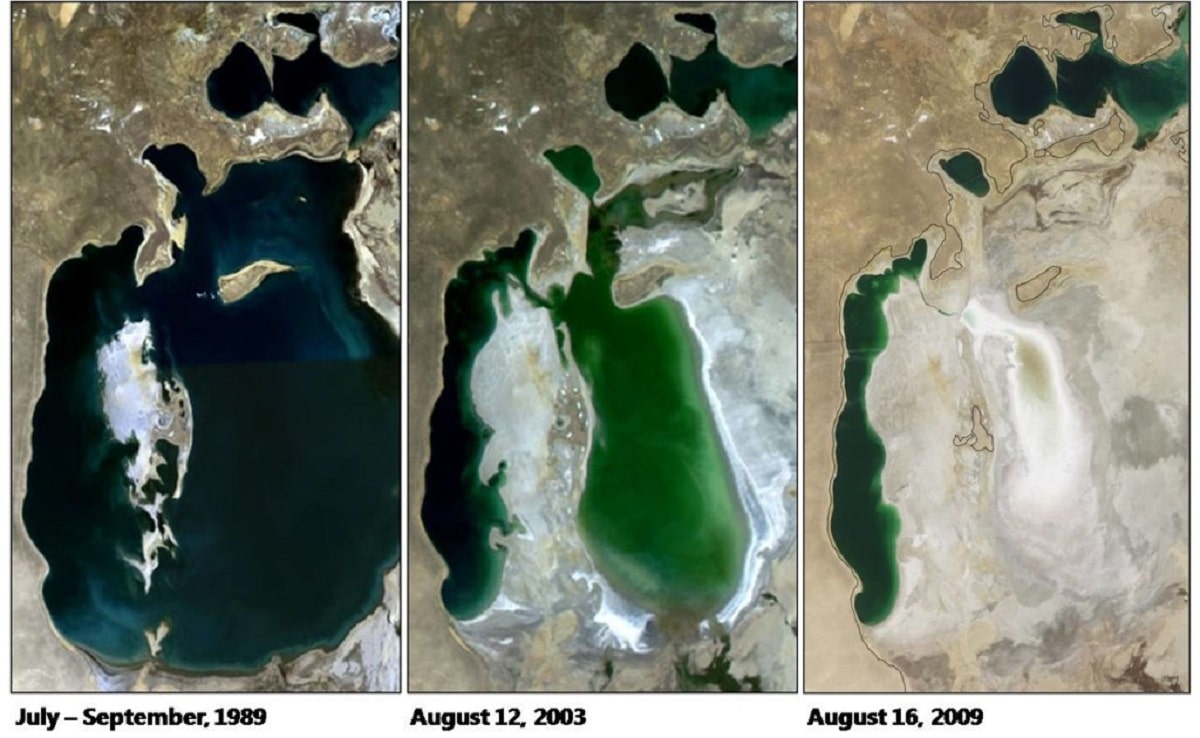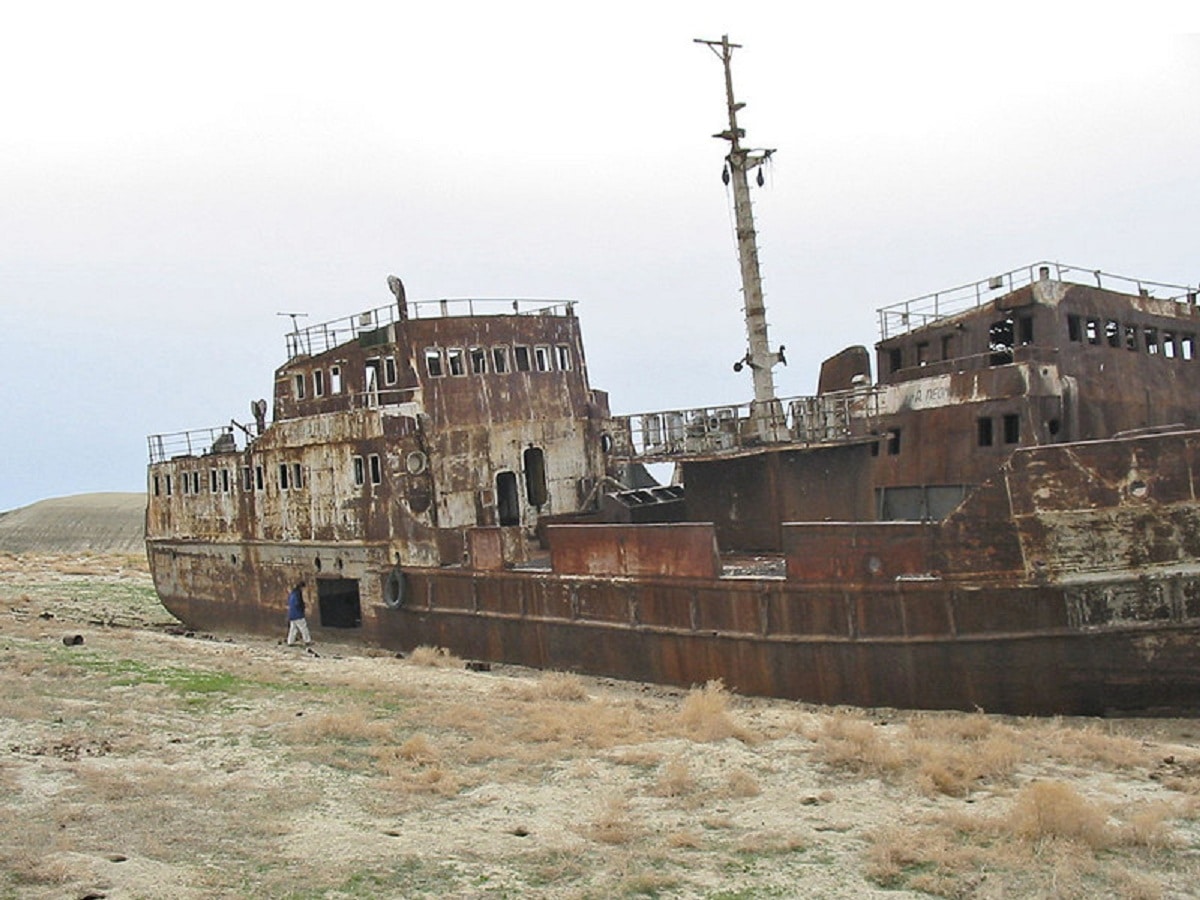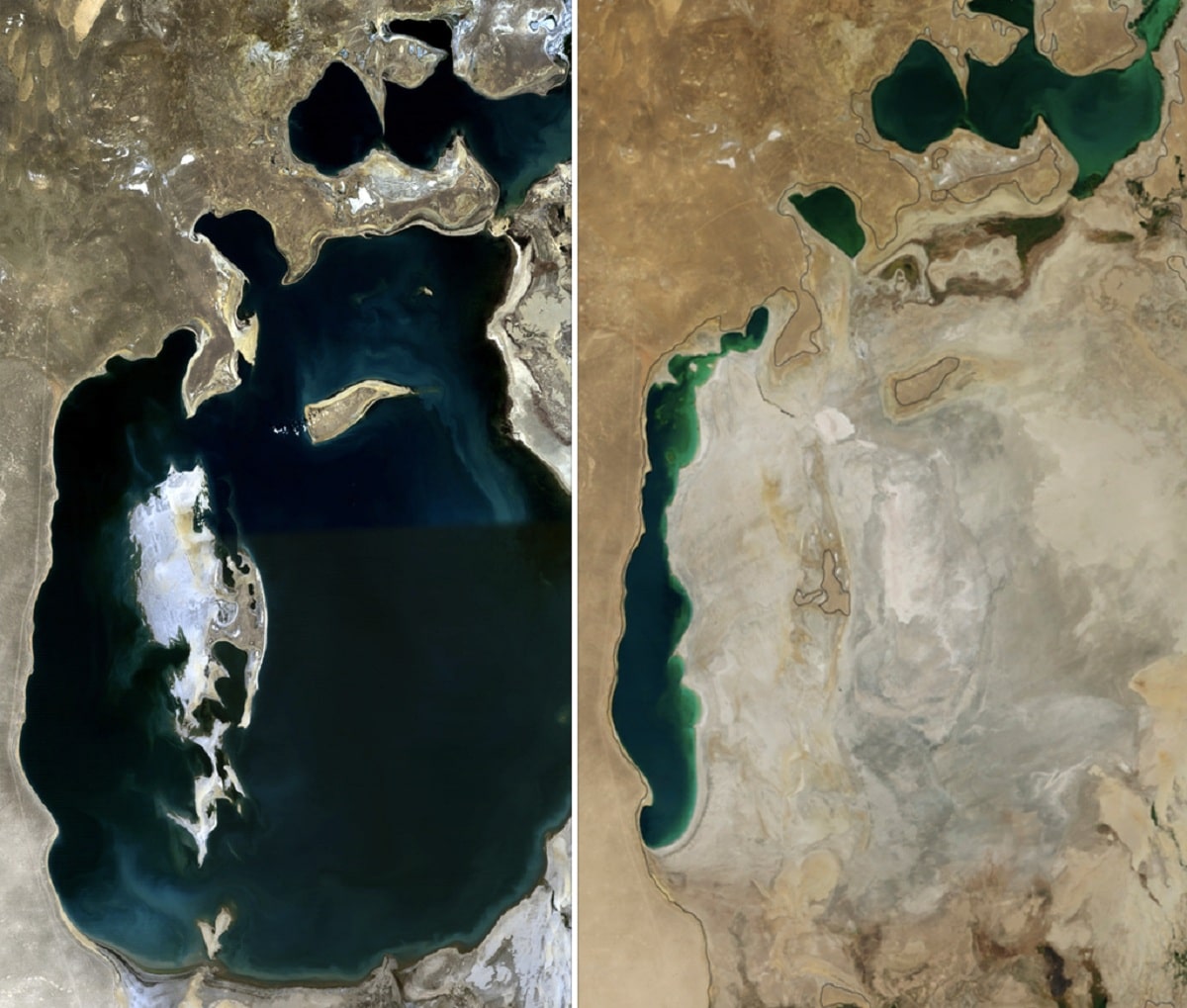
One of the most well-known ecological disasters in the world has been the loss of the volume of water in the Aral Sea. It is a sea that has lost 90% of its entire volume of water during the last 50 years. The saddest thing is that this sea became the fourth largest endorheic lake in the world and has been reduced to almost nothing.
In this article we are going to tell you everything you need to know about the Aral Sea and what were the causes of its loss of water.
Key features

Although it is known by the name of the Aral Sea, it is an inland lake that is not linked to any sea or ocean. It is located in the northwest of the Kyzyl Kum desert between present-day Uzbekistan and Kazakhstan. The problem is that it is located in a place with a lot of arid lands in Central Asia where the temperatures in summer are quite high. These temperatures are usually around 40 degrees Celsius.
Since the surface of the water and the general volume that this sea holds fluctuates every year, calculating the amount it occupies is somewhat complex. In 1960 it had an area of 68.000 square kilometers while in 2005 it only had an area of 3.500 square kilometers. Although of all its hydrographic basin it reaches 1.76 million square kilometers and occupies a large part of all of central Asia.
Until the 1960s the entire Aral Sea was abundantly fed by various rivers. These rivers were the Amu Daria in the southern part and the Sir Daria in the northeast part. The main difference between 50 years ago and now is that fresh water discharge is minimal. By providing less fresh water, the salinity of the sea must increase. The salinity of the ocean is usually about 33 grams per liter, the water of the Aral Sea reached more than 110 grams per liter.
Formation and biodiversity of the Aral Sea

This sea was formed over a great depression during the Neogene period full Cenozoic era. At that time the entire Indian continent was in the midst of a collision with Asia. This collision process diminished the surface of the Paratetis sea, thus extinguishing it. In addition, it caused a folding of the earth's crust that caused the Caucasus Mountains and the Elburz Mountains to emerge. The depression that was generated began to fill with water since some springs such as the Sil Daria River came from.
Years after its formation, the Aral Sea dried up for the most part until the Pleistocene and Holocene, returned to be filled.
As for biodiversity, it has been quite scarce for several decades. As the sea has dried up, the species of flora and fauna that inhabited this river have decreased. Furthermore, not only because of the loss of water volume was the consequence of the low existence of living species, but also the high salinity of the water.
In ancient times, the river deltas were quite fertile and there were numerous species of animals and plants that lived in good conditions. This sea was home to numerous aliases and species of fish, as well as other creatures. The fish that stood out the most were sturgeon, Aral barbel, carp and rutile. More or less it was estimated that there were about 100 species of fish, 200 species of mammals and 500 species of birds. Today, the effect of some species of fish that are still preserved, most of them have disappeared.
Threats of the Aral Sea

The crisis of the evaporation of water from this sea is the responsibility of human action. In 1960, the Soviet Union created a plan to convert all the arid plains of that region of Asia into an area with great capacity to produce cotton. Cotton needs a lot of water, so they diverted water from rivers to irrigate crops. To do this, various structures were created that made the volume of water entering the Aral Sea less and less.
It was possible to generate great profits with the cotton industry, but this with a high price for the Aral Sea. The volume of seawater was shrinking at a fairly rapid rate. This caused the bed to begin to appear in some areas of the sea, turning the islands into peninsulas or part of continuous land. The salinity of the sea increased more and more as the volume of water decreased. Not only did the reduction in the volume of water affect the Aral Sea, but also increased pollution as well as salinity.
All these changes in environmental conditions caused serious adaptation problems for flora and fauna. This is how the fish began to disappear since they could not bear these new conditions. The fishing and maritime industries declined and many people who depended on the sea had to withdraw.
Later, in the 90s, Vozrozhdenya Island was already a peninsula. This peninsula became a concern, as it was used for biological weapons testing during the Cold War. Large concentrations of anthrax spores were recorded in these areas. It is already at the beginning of the year 2000 when the entire area was cleaned excessively in order to free it from the contamination of microorganisms that are harmful to humans.
The entire Aral Sea region is heavily affected and it is detrimental to people's health. Although the cleaning was done in an extreme way, there was still today, the dust that is raised by the wind has a large amount of toxic substances capable of causing certain dangerous diseases. In these specks of dust are particles of fertilizers and pesticides.
Although numerous efforts have been made to rescue this sea, it is very difficult for the water to take its place. In 2005, Kazakhstan built a dam that serves to separate the waters of the northern part and the southern part. This dike that has caused the slight increase in the volume of the sea to this day in the northern part.
I hope that with this information you can learn more about the Aral Sea.